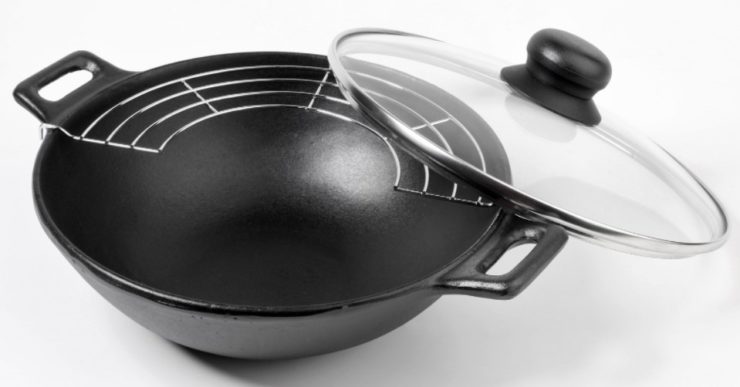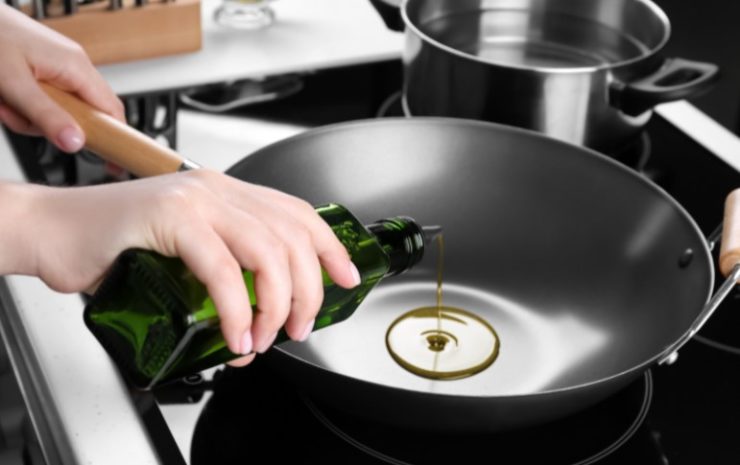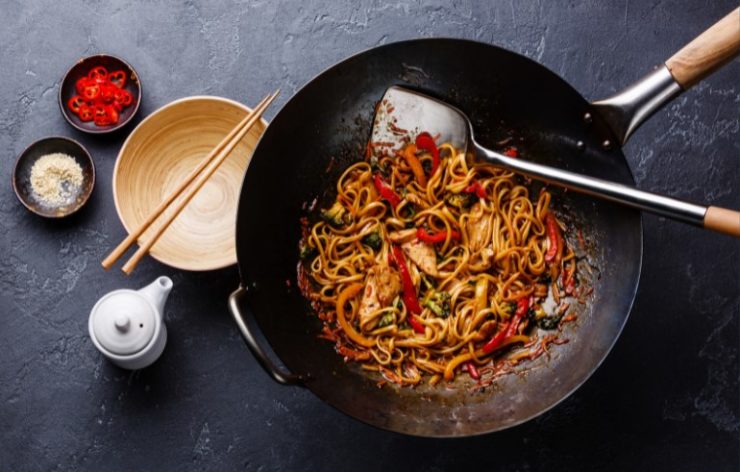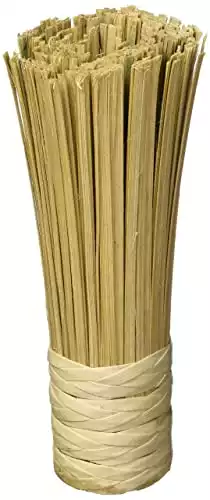I’ve been a professional cook for over a decade and several of those years were spent manning the wok station in a variety of different restaurants. And while the demands of a professional kitchen are a bit different than at home, a well seasoned and rust-free wok is essential either way.
So, it doesn’t matter if your wok was left in the sink or out in the rain, here’s how to get a rusty wok back into action.
In This Article
How To Clean A Rusty Wok
1. Scrub Scrub Scrub
Unfortunately, there’s no super-secret restaurant trick that will take care of the rust for you. Instead, you’ll need some steel wool and a bit of elbow grease.
Add some water to your wok so that you can keep the steel wool wet as you scrub the rusted areas in a fast circular motion.
As the rust is being removed and the water becomes dirty, give the wok a rinse periodically so that you can see what you’re doing. Continue to do this until all of the rusty areas have been removed.
And while it’s not absolutely necessary, you can do the same thing to any rust spots on the outside of the wok as well.

Note: If you notice that there are areas with severe rust flakes or pitting, it’s likely that the wok will need to be replaced.
2. Rinse And Dry
Once all of the rusted areas have been removed, give the whole wok a good rinse with hot water and then wipe any excess water off with a towel.
Now, place the wok over a medium-high burner and allow it to dry very thoroughly. At this point, if you see that you missed any rust spots, simply repeat step 1.
3. Re-Season
Now that your wok is dry and rust-free, it’s time to re-season. This creates a protective coating that will help keep rust at bay so that you’re ready to cook.
While your wok is still over medium-high heat, dip a folded paper towel into a high-heat oil and wipe a very thin coating on the inside of the wok. You may want to use tongs here as the wok will be very hot.
If you see oil dripping down the sides or pooling in the bottom of the wok, use a dry towel to wipe it out. The oil layer should be as thin as possible.
The oil will begin to smoke and darken fairly quickly. Shift and rotate the wok around your burner so that the entire cooking surface is evenly colored and most of the smoke has dissipated.
Congratulations! You’ve now created your first layer of seasoning and you can get to stir-frying. But, for the best results, you should repeat the oiling and heating process several times. This will create a stronger seasoning that will last longer and be harder to damage.

Keep It Ventilated: Seasoning a wok will produce a lot of smoke, especially if you’re doing several coats (which you should). If you don’t have a good wok hood, consider doing this outside on a grill or better yet, an outdoor wok burner.
Ongoing Wok Maintenance
A carbon steel wok is a versatile and durable cooking tool. But, they require a little bit of care and maintenance to keep them free from rust and functioning at their best.
A Clean Wok Is A Happy Wok

As soon as you’re done cooking, your wok should always be cleaned, dried, and oiled. And I know you just want to dig right into that delicious stir fry you just made, but take a few extra minutes to take care of your wok before you sit down to eat.
Food sitting in a wok for a long period of time can damage your seasoning, especially if there are acidic ingredients involved.
Avoid Soap When Possible
- Constructed entirely of bamboo
- Known as a cleaning whisk
- Quickly and efficiently cleans a wok
A well-seasoned wok should be able to be cleaned with nothing but water and a wok brush. This is especially true if you clean your wok right away, while it’s still hot from the stove.
I’m not saying a little bit of soap is the end of the world, but it can eat away at that hard-earned seasoning you’ve been developing. So I would avoid it as much as possible.
Keep Your Wok Dry And Oiled

After cleaning, you should always dry your wok by heating it thoroughly on the stove. Then, apply a very thin coat of oil to the cooking surface to keep your wok rust-free and ready to use.
Rust is the number one enemy to carbon steel cookware and it’s a fairly common problem. Luckily, it’s also a pretty easy fix. A bit of steel wool and a little elbow grease is really all you need. After that, just remember to keep your wok clean, dry, and oiled.
And if you’re really ready to level up your wok cooking game, check out our list of the best outdoor wok burners for professional power at home.
Frequently Asked Questions
How Do You Keep A Wok From Rusting?
The key to keeping your wok rust-free is to clean, dry, and oil your wok after every use. Applying several seasoning layers will also create a protective barrier that will help to keep rust at bay.
Can I Use Soap To Clean My Carbon Steel Wok?
Avoid using soap whenever possible as it can damage the seasoning layer on your wok. Using soap won’t ruin a wok, but you may need to re-season it afterward.
Can I Use Salt To Remove Rust From My Wok?
Coarse salt can be used as a scrubbing abrasive to remove very small areas of surface rust. But, in most cases, a more aggressive abrasive like steel wool is much more effective.










